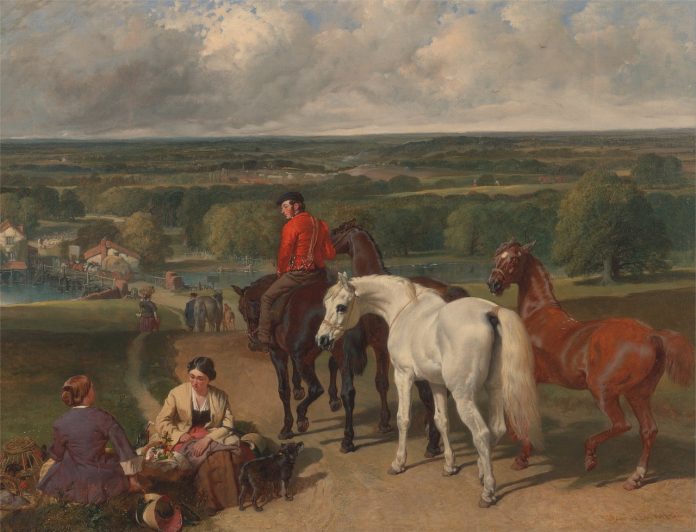The Chaos of Tristram Shandy: A Symphony of Digressions and Nonsense
Breaking the Mold of the 18th-Century Novel
“The Life and Opinions of Tristram Shandy, Gentleman” by Laurence Sterne is not your typical 18th-century novel. It’s not, in fact, your typical novel at all. While contemporaries of Sterne might have been penning structured tales of manners and moral fortitude, Sterne was busy constructing a narrative labyrinth, a celebration of digression, and a rebellion against narrative norms. At its core, “Tristram Shandy” doesn’t simply tell a story; it explores the nature of storytelling itself. It questions how stories are built, torn apart, and reassembled—if they ever come together at all.
Tristram’s Elusive Self in “The Life and Opinions of Tristram Shandy, Gentleman” by Laurence Sterne
“The Life and Opinions of Tristram Shandy, Gentleman” by Laurence Sterne is a book that defies summarization, and that’s precisely the point. Tristram, the supposed protagonist, spends most of the book not talking about himself. Instead, he dives into a plethora of asides about everything, from his uncle’s obsession with fortifications to philosophical debates on noses. The more we read, the less we know about Tristram himself—a delicious irony in a book supposedly dedicated to his life and opinions. Sterne uses this technique to challenge the reader’s expectations, frustrating them in such a way that they become complicit in the novel’s disarray.
A Novel Built on Fragmentation
One of the most unusual features of this novel is its fragmented structure. It often feels like Sterne is playing a trick on the reader, pulling them into one story only to whisk them away into another before any conclusions can be drawn. Pages of philosophical musings or seemingly unrelated anecdotes interrupt the narrative, and yet, there’s a bizarre coherence to it all. Sterne seems to suggest that life itself is a digression—a series of unpredictable twists and turns where beginnings and endings blur into one another. Like Tristram himself, we are all unreliable narrators of our own lives.
“The Life and Opinions of Tristram Shandy, Gentleman” by Laurence Sterne: A Forerunner of Postmodernism
In this sense, “The Life and Opinions of Tristram Shandy, Gentleman” by Laurence Sterne is more than a novel. It’s an experimental playground where Sterne toys with form, time, and the reader’s patience. The book has been called a forerunner of postmodernism, and it’s easy to see why. Sterne demolishes the conventional expectations of storytelling, daring the reader to follow him through a chaotic maze that leads nowhere—except perhaps to the absurdity of existence itself. This is a world where chronology is subverted, where narrative linearity is an illusion, and where the digressions are the story itself.
Disrupting the Reader’s Experience
The physicality of the book also plays a role in its oddity. Sterne inserts black pages, marbled pages, and even a blank page, which the reader is invited to fill with their own imagined portrait of the Widow Wadman. These disruptions force readers to rethink their relationship with the text, transforming reading into a participatory act. Sterne, with these visual interruptions, compels us to confront the physical nature of the book as an object and the idea that meaning is something we help create rather than something that is handed to us.
“The Life and Opinions of Tristram Shandy, Gentleman” by Laurence Sterne: A Symphony of Wit and Absurdity
But what makes “The Life and Opinions of Tristram Shandy, Gentleman” by Laurence Sterne truly unusual is its humour. Sterne’s wit dances between bawdy, sharp, and absurd, often within the same paragraph. He mocks the conventions of storytelling, pokes fun at his characters, and frequently breaks the fourth wall to address the reader directly. Tristram, as a narrator, is unreliable in the most delightful way, often apologising for his digressions while simultaneously indulging in them further. Sterne delights in leading the reader down one path, only to abruptly veer off into another, leaving the reader both bemused and entertained by the narrative’s unpredictability.
Philosophical Musings in a Chaotic World
Beyond the humour and digressions, “The Life and Opinions of Tristram Shandy, Gentleman” by Laurence Sterne contains profound reflections on human nature and the complexities of memory, identity, and language. Sterne’s philosophical musings are woven into the fabric of the absurdity, creating a narrative that, despite its fancy, contemplates the more significant questions of life. His exploration of time, memory, and the impossibility of truly capturing life in words speaks to the limitations of language and the elusive nature of experience. The very act of trying to write one’s life, Sterne seems to suggest, is inherently flawed—yet it’s a pursuit that we cannot help but undertake.
“The Life and Opinions of Tristram Shandy, Gentleman” by Laurence Sterne: An Anti-Novel That Defies Categorization
Ultimately, “The Life and Opinions of Tristram Shandy, Gentleman” by Laurence Sterne is a literary problem, an anti-novel that defies categorisation. Its very chaos is its charm. By resisting the confines of traditional narrative, Sterne creates something altogether new—a celebration of life’s unpredictability and the joy of nonsense. It’s a novel that doesn’t demand to be understood but to be experienced, where the journey is as fragmented, chaotic, and whimsical as life itself. In Sterne’s world, meaning isn’t something that’s found—it’s something that’s constructed from the pieces of digressions, reflections, and, above all, laughter.





